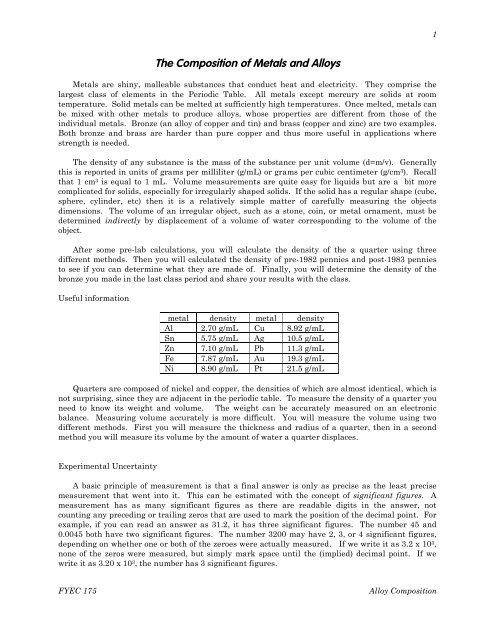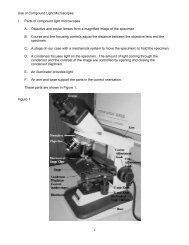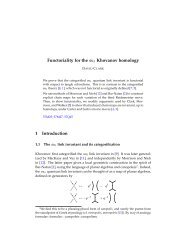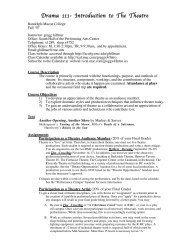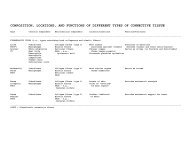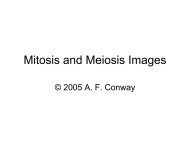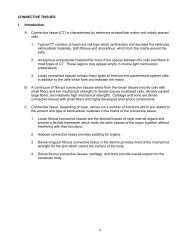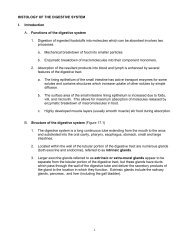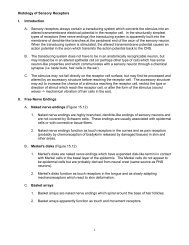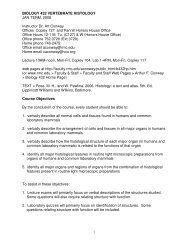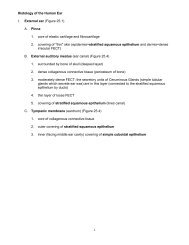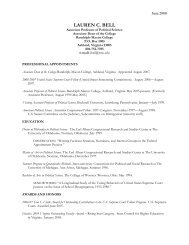The Composition of Metals and Alloys - Faculty.rmc.edu
The Composition of Metals and Alloys - Faculty.rmc.edu
The Composition of Metals and Alloys - Faculty.rmc.edu
You also want an ePaper? Increase the reach of your titles
YUMPU automatically turns print PDFs into web optimized ePapers that Google loves.
32. Electrum is an alloy <strong>of</strong> gold <strong>and</strong> silver. An ancient coin made <strong>of</strong> electrum was found to have adensity <strong>of</strong> 11.8 g/mL. What is the percentage <strong>of</strong> gold in the coin?B. Measure the density <strong>of</strong> a quarter (method 1)Materials 100 mL graduated cylinder a quarter electronic balance1. Weigh a quarter on an electronic balance. Note: Be sure to note the exactamount in your lab notebook.2. Determine the volume <strong>of</strong> a quarter by measuring itsdiameter <strong>and</strong> thickness. <strong>The</strong> formula for the volume <strong>of</strong> acylinder is πr 2 h.3. Calculate the density. Questions:Hint – convert your units so thevolume is g/cm 3 .Show all your calculations in yourlab notebook.Of all the numbers used incalculating the density, which hasthe smallest number <strong>of</strong> significantfigures?How many significant figures are inthis number?Your calculated density will havethe same number <strong>of</strong> significantfigures. Rewrite the density, ifnecessary to show this.4. Estimate the error as a percentage. Be sure to record all calculations inyour lab notebook.C. Measure the density <strong>of</strong> a quarter (method 2)1. Fill a 100 mL graduated cylinder to around the 95 mLmark.Note: Be sure to note the exactamount in your lab notebook.2. Record the water level in the cylinder. Hint – read from the bottom <strong>of</strong> themeniscus.3. Carefully drop the same quarter you used in the previousdensity determination into the cylinder withoutsplashing. You may want to use tweezers.Interpolate between the graduationsas best you can.Hint – If water splashes out <strong>of</strong> thecylinder, start over.Watch out for air bubbles! <strong>The</strong>y willthrow your calculations <strong>of</strong>f.FYEC 175Alloy <strong>Composition</strong>
44. Re-read the water level. <strong>The</strong> difference is the volume <strong>of</strong>the quarter.5. Use your previously measured mass to find the density.6. Pour the water out, dry the quarter, <strong>and</strong> repeat thevolume measurement twice more.7. Calculate the density for each run, then calculate theaverage <strong>of</strong> the three densities.Be sure to record all measurementsin your lab notebook.Questions:Significant figures are counted tothe last digit that stays constant orvaries only slightly. Which digit isthis?This means you should assume howmany significant figures in youranswer?Rewrite the density, if necessary,with the proper number <strong>of</strong>significant figures.8. Estimate the % error from the significant figures. Be sure to record all calculations inyour lab notebook.D. Measure the density <strong>of</strong> a quarter (method 3)1. Form a group with two or three other students. Writedown the names <strong>of</strong> your partners. Compare results.2. As a group decide on yet another proc<strong>edu</strong>re to determinethe density, one that you expect to be more accurate thanthe method in parts B & C. Present your proposal to yourinstructor. After approval carry it out. Record theproc<strong>edu</strong>re carefully enough that another group <strong>of</strong>students could repeat it <strong>and</strong> check your numbers.3. Report the density <strong>and</strong> % error.QuestionIs there any reason to prefer oneperson’s results? Explain.E. Measure the density <strong>of</strong> a copper shotMaterials copper shot graduated cylinder1. Weigh a weigh boat full <strong>of</strong> dry copper shot. Do not selectpieces with dimples as they may lead to air bubbles.2. Fill the graduated cylinder about half full <strong>of</strong> water. Usingthe water displacement method, determine the volume <strong>of</strong>the shot.Hint – Watch out for air bubbles!<strong>The</strong>y will throw your calculations<strong>of</strong>f.3. Report the density <strong>and</strong> % actual error. Hint – density <strong>of</strong> copper is given inthe table <strong>of</strong> densities in theintroduction.FYEC 175Alloy <strong>Composition</strong>
5F. Measure the density <strong>of</strong> pre-1982 penniesMaterials 30 pre-1982 pennies graduated cylinder1. Weigh 30 pre-1982 pennies. Hint – Watch out for air bubbles!<strong>The</strong>y will throw your calculations<strong>of</strong>f. Tap the side <strong>of</strong> the cylinder ifbubbles form.2. Using the water <strong>and</strong> graduated cylinder method,determine the volume <strong>of</strong> the pennies.3. Report the density <strong>and</strong> % error.4. Based on the density you measured what is the majorcomponent in the alloy used to make old pennies?Hint – consult the table <strong>of</strong> densitiesin the introduction.G. Measure the density <strong>of</strong> post-1983 penniesMaterials 30 post-1983 pennies graduated cylinder1. Weigh 30 post-1983 pennies. Hint – Watch out for air bubbles!<strong>The</strong>y will throw your calculations<strong>of</strong>f. Tap the side <strong>of</strong> the cylinder ifbubbles form.2. Using the water displacement method, determine thevolume <strong>of</strong> the pennies.3. Report the density <strong>and</strong> % error.4. Based on the density you measured what is the majorcomponent in the alloy used to make new pennies?Hint – consult the table <strong>of</strong> densitiesin the introduction.H. Measure the density <strong>of</strong> your bronzeMaterials your bronze lump graduated cylinder1. Calculate the density <strong>of</strong> the bronze lump you made in thelast experiment using the water displacement method.2. Collect the class data on the bronze alloy composition (ascalculated in the pre-lab) <strong>and</strong> the density.3. Using Excel, or some other spread sheet, plot the density<strong>of</strong> the bronzes as a function <strong>of</strong> the % tin.QuestionHow good is the classes data?Adapted from Chemistry in the Ancient World by Patrick Hoggard <strong>and</strong> <strong>The</strong> Chemistry <strong>of</strong> Art<strong>and</strong> Artifacts by Ruth BeestonFYEC 175Alloy <strong>Composition</strong>


